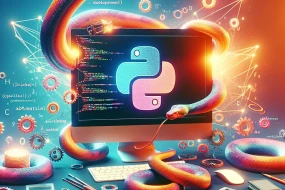
In an era where our lives are increasingly intertwined with technology, understanding cybersecurity threats is not just for IT professionals. It's as crucial as locking your front door. As we move forward, the landscape of cyber threats evolves, making it imperative to stay informed and prepared. This comprehensive guide explores the most pressing cybersecurity threats you may face and offers practical tips to protect yourself and your digital assets.
1) Ransomware Attacks: A Growing Menace
Ransomware, a type of malicious software that encrypts a victim's files, is becoming more sophisticated. Attackers demand ransom to restore access, and these demands are often hefty. For instance, the infamous WannaCry attack affected thousands of systems globally, causing disruption across industries. To safeguard against such attacks, ensure regular data backups and invest in reliable security software. Additionally, educate your team on recognizing phishing emails, a common delivery method for ransomware.
2) Internet of Things (IoT) Vulnerabilities
Our homes and workplaces are filled with IoT devices, from smart thermostats to security cameras. These devices, while convenient, are often less secure, making them prime targets for hackers. A breach in one device can potentially compromise your entire network. To protect yourself, change default passwords, regularly update device firmware, and consider creating a separate network for your IoT devices.
3) Phishing Scams: More Sophisticated Than Ever
Phishing scams are not new, but they are becoming increasingly sophisticated. Cybercriminals craft emails that mimic legitimate organizations, luring individuals into divulging sensitive information. A common mistake is not verifying the sender's email address. Always double-check URLs, and if something feels off, contact the organization directly using verified contact information.
4) Cloud Security Issues
As more businesses migrate to the cloud, security concerns grow. Misconfigured cloud settings can expose sensitive data to unauthorized access. To mitigate risks, employ strong authentication measures and regularly audit your cloud configurations. Understanding and implementing the shared responsibility model is key to securing cloud-based assets.
5) Insider Threats: The Enemy Within
Not all cybersecurity threats come from external sources. Insider threats, whether intentional or accidental, can be devastating. Employees with access to sensitive information can unintentionally leak data or, worse, use it maliciously. Implementing strict access controls and monitoring user activities can help mitigate these risks. Regular training and awareness programs are also essential in fostering a security-conscious culture.
6) AI-Powered Cyber Attacks
Artificial Intelligence is a double-edged sword. While it enhances cybersecurity measures, it also empowers cybercriminals to launch more sophisticated attacks. AI can be used to automate and scale attacks, making them faster and more efficient. To counteract AI-powered threats, invest in AI-driven cybersecurity solutions that can predict and respond to threats in real-time.
7) Social Engineering: Manipulating Human Nature
Social engineering exploits human psychology rather than technical vulnerabilities. Cybercriminals manipulate individuals into divulging confidential information or performing actions that compromise security. Common tactics include impersonation and pretexting. To guard against social engineering, foster a culture of skepticism and verify requests for sensitive information independently.
8) Supply Chain Attacks
Supply chain attacks target vulnerabilities within the supply chain, allowing attackers to compromise software or hardware before it reaches the end-user. The SolarWinds attack is a notable example, affecting numerous organizations worldwide. To protect against such threats, vet your suppliers carefully and ensure they adhere to stringent security standards.
9) Cryptojacking: Hijacking Your Resources
Cryptojacking involves the unauthorized use of your device's resources to mine cryptocurrency. This can slow down your systems and increase electricity costs. Often, users remain unaware of the intrusion. To prevent cryptojacking, use ad blockers, regularly scan your systems, and monitor your device's performance for unusual activity.
10) Zero-Day Exploits
Zero-day exploits take advantage of unknown vulnerabilities in software. These are particularly dangerous as they can be exploited before developers have a chance to patch them. Keeping software up-to-date and employing intrusion detection systems can help mitigate the risks associated with zero-day vulnerabilities. Additionally, consider participating in bug bounty programs to encourage the discovery and reporting of vulnerabilities.






























